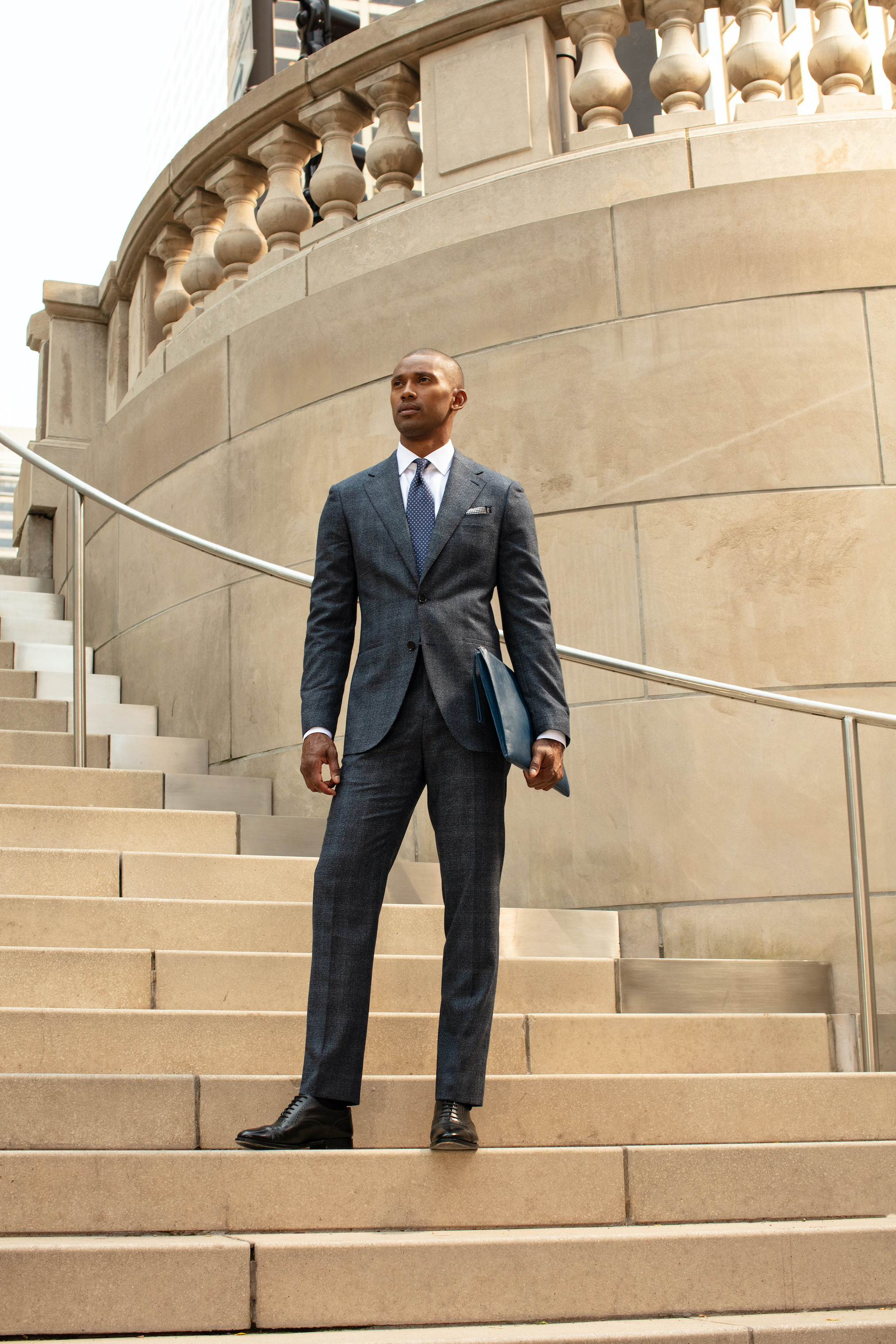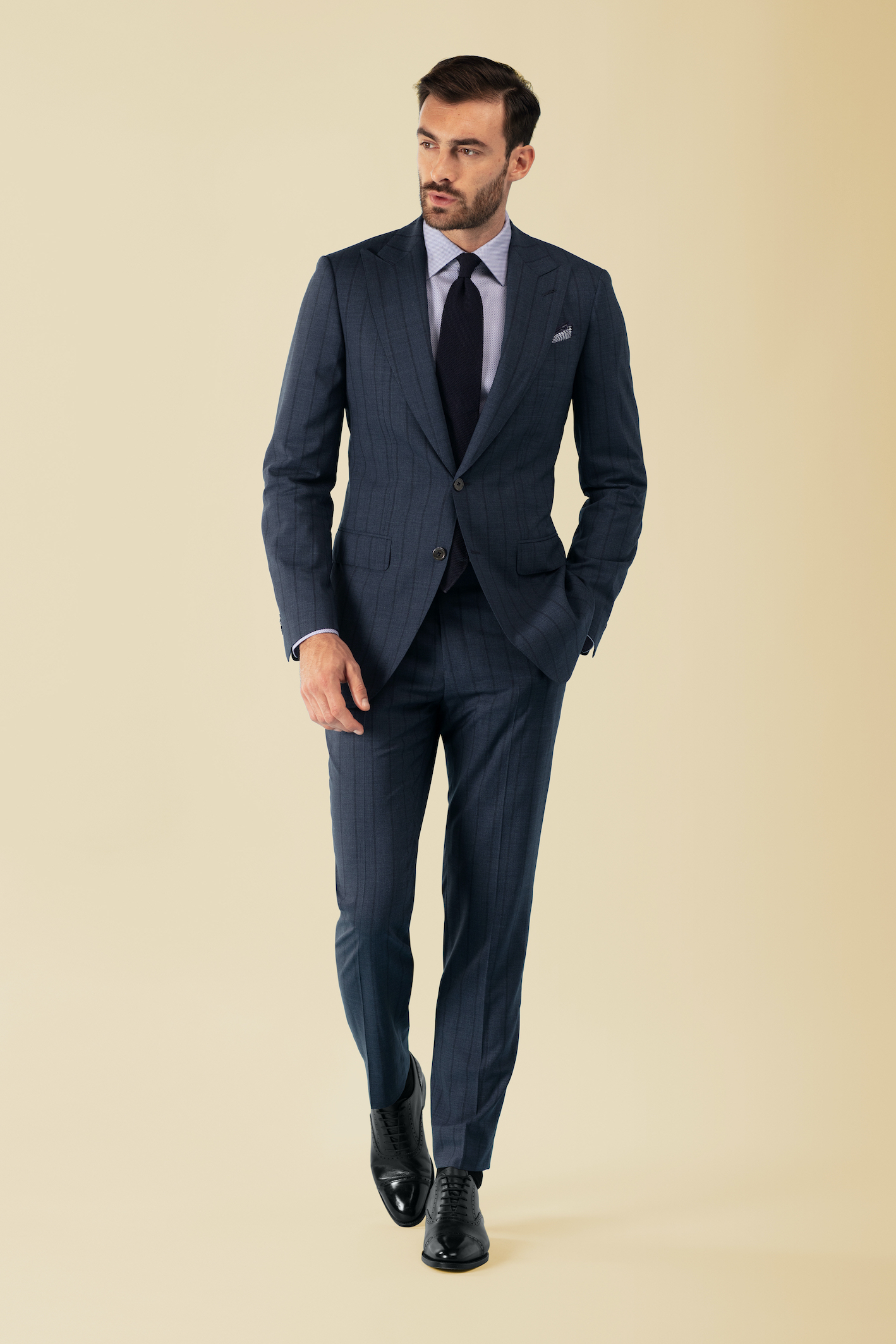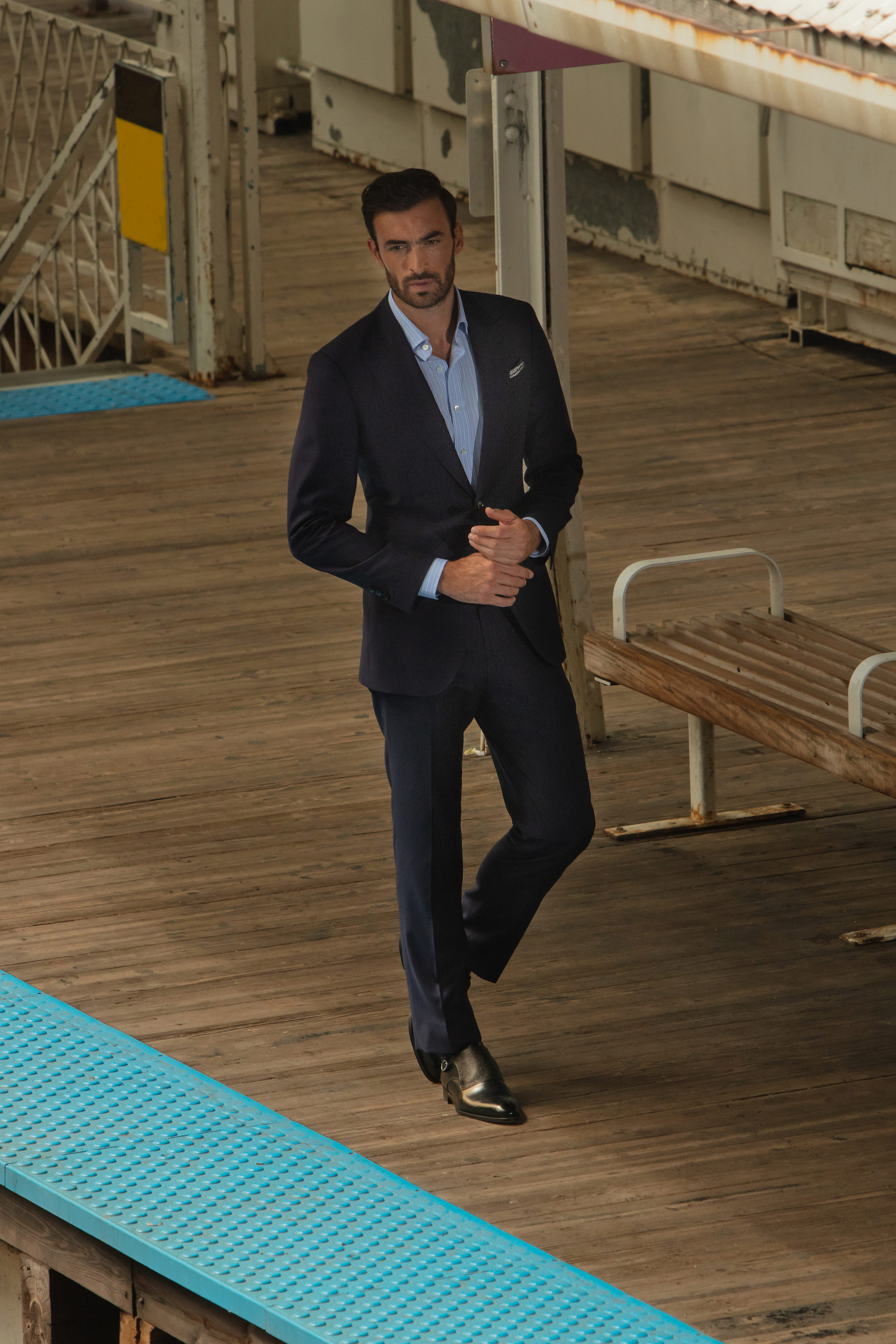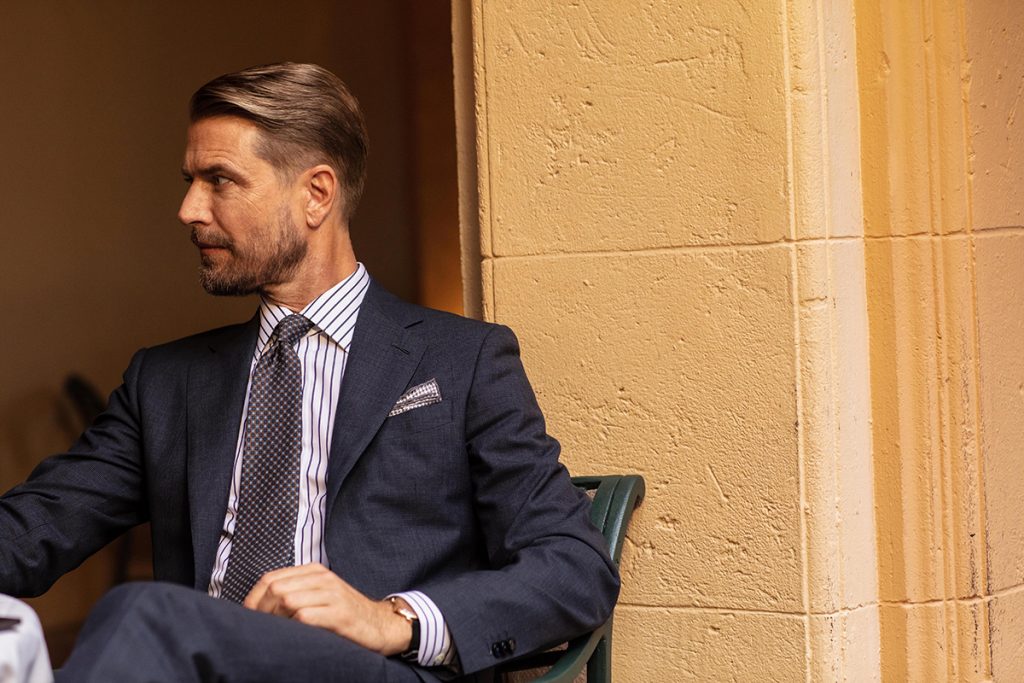Your Suiting Guide
The Classic Suit
This month, we are taking a deep dive into the elements of suiting. Every guy needs suits that answer the call for a variety of occasions–work, weekends, nights out, travel, meetings, and more formal events. Here, we’re examining the elements of a Classic Suit style.
The all-rounder of your suiting wardrobe, a properly fitting Classic Suit is just about invaluable. Wear it into the office, for big meetings, to impress some friends at the bar, when meeting future in-laws–you get the point. It’s a suiting Swiss Army knife, the building block of dressed-up style that can flex to either side depending on what you need.
And we don’t call it a “classic” by chance–some design elements should not be messed with, and the Classic Suit epitomizes this approach. The cumulative effect of these seemingly small choices creates a timeless look and vibe that will serve you well for many, many years to come. Your Classic Suit is all about making extremely small tweaks to an abundantly proven recipe, and respecting those foundational elements. Let’s dive into the details.
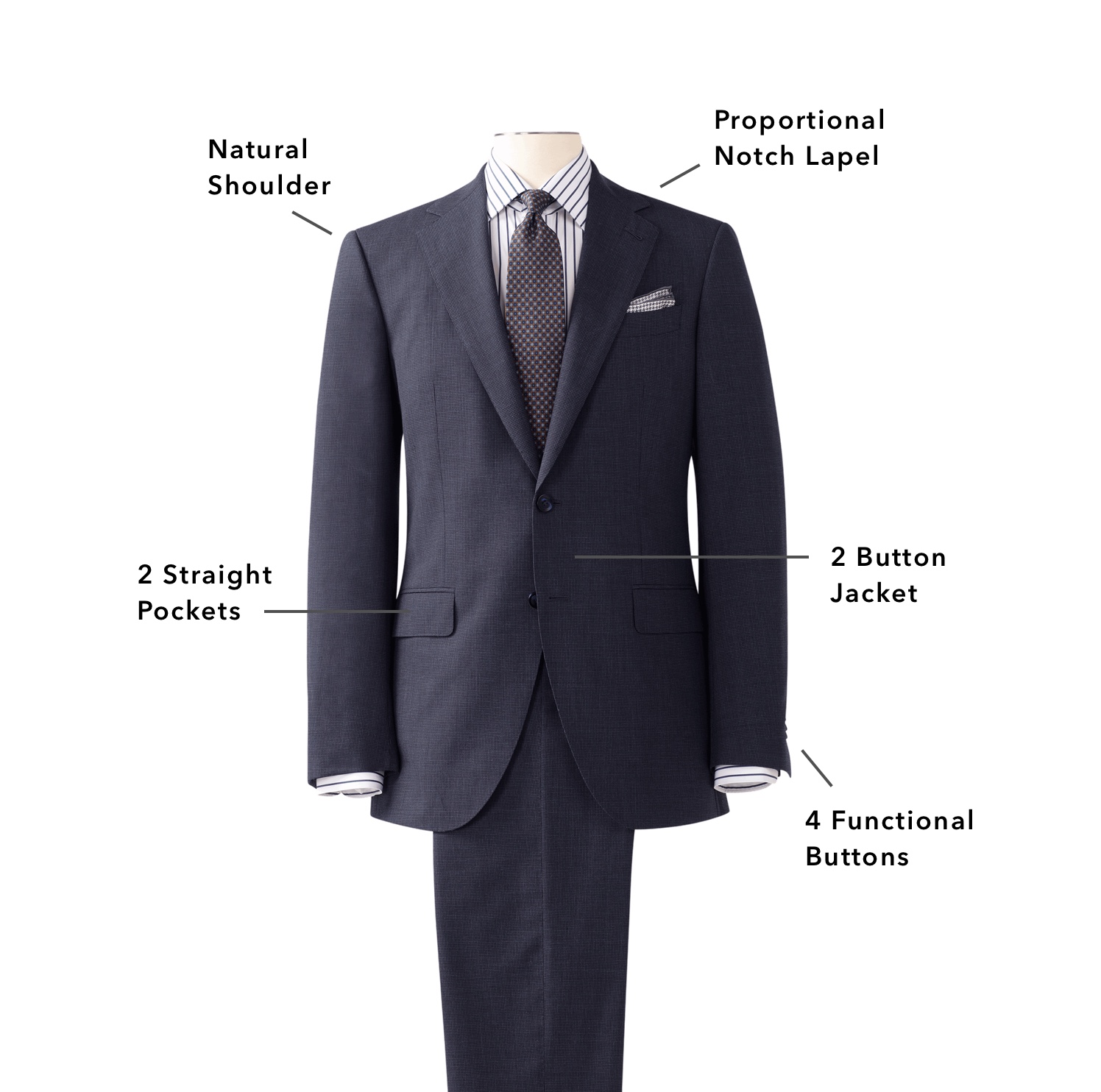
Straight Pockets
A perfect middle-ground of casual and formal, a straight pocket with flaps is the most common pocket style, specifically for business suiting. Originally designed to keep debris out of one’s pockets while traversing the countryside, a flapped pocket now lends a nice air of casualness to an otherwise more formal straight pocket. Tuck in the flap to immediately make your jacket appear more cleanly formal, and you’ll gain the appearance of a besom pocket. Whatever you prefer, make sure to adjust both pockets accordingly.
Natural Shoulder
Our recommended shoulder padding option, and the one that looks best on most men. This is a much thinner pad that will conform to your body with wear. It creates a flattering shoulder shape while still giving you some balanced shape definition at the top of your suit’s silhouette.
Proportional Notch Lapel
There is a time and a place for a peak lapel, and this is not it. The notch lapel has gained immense popularity because it is so universally accepted as a nicely understated option. The priority here is to find the lapel width that best suits your face, body type, and style preference. A narrower lapel can appear more formal and stylish, but must be worn with skill. A wider lapel can make a bold statement, but looks ridiculous at a certain point. Find that nice medium and stick with it.
Two-Button Jacket
Again, an option that shouldn’t require much consideration. Single-button jackets should be reserved for black tie and more formal wear, and a three-button jacket is generally for very tall men.
Functional Four-Button Cuff
First, the button count: four buttons is most often the sweet spot for a man looking for a Classic Suit to be worn primarily at the office. Three buttons can come off as too casual, though there is certainly an argument to be made for it in the relaxed work place. Next, the functional buttonholes and sleeves: originally made for field medics to quickly roll up their jacket sleeves when operating, the functional cuff (or surgeon’s cuff) has risen in popularity for a few reasons. 1. It is a clear and instant indicator that your suit is of high quality, and most likely custom or bespoke. 2. An off-the-rack suit would never include this feature, as it makes sleeve length alterations too difficult. 3. You have a functioning suit jacket cuff–roll up your sleeves when the occasion requires it, or leave the last button undone to show off the quality of your jacket and to create a more casual look.
Our Favorite Classic Suits
